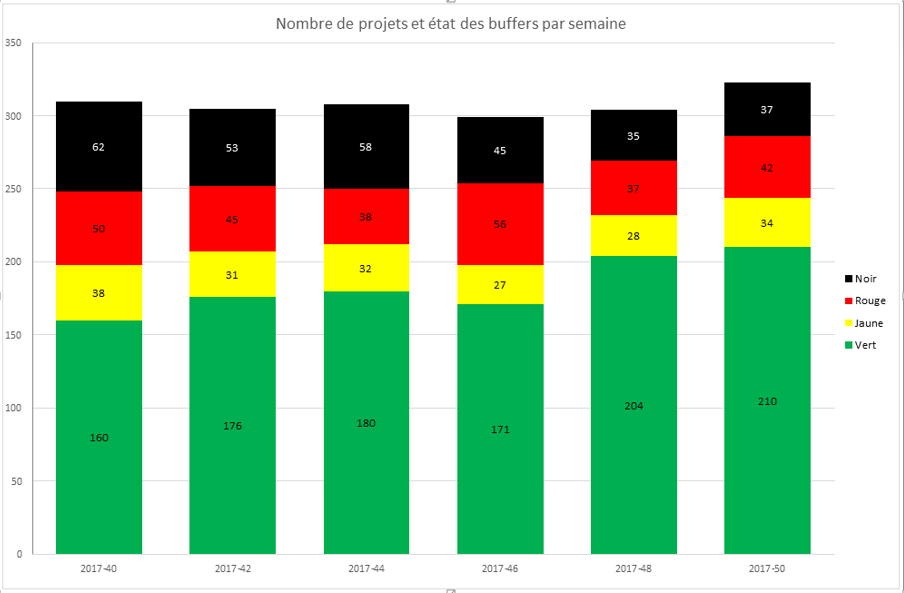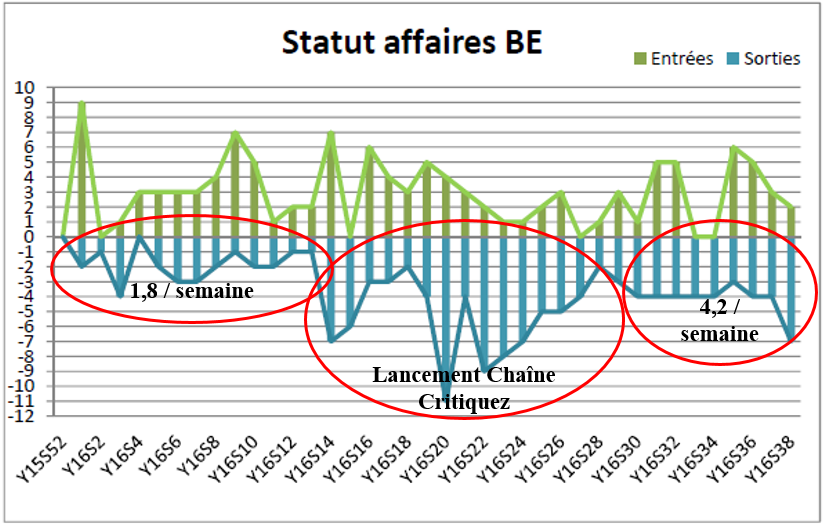- Home >
- To go further >
- Practical cases >
- ETO industry
Critical Chain in ETO
Critical Chain case study : Transform a company with the Critical Chain to make it more competitive
Each order constitutes a project and requires specific development.
In Engineering to Order, each order is developed by the Design Office before going into production.
In this context, the main challenge was to increase the capacity of the Design Office and then reduce the overall lead time of an order by improving the overall flow (Design office, industrialisation, supplies, manufacturing, Assembly).

The company, which wishes to remain anonymous, works in the energy and Oil & Gas sector. Its activity consists in designing and producing tailor-made high performance speed reducers and multipliers.
The flow of a product, once the order is placed is as follows:
1) 3D design in the design office
2) After validation of the model by the client, 2D design
3) Industrialization of the product by methods
4) Purchase of raw materials and accessories necessary for the equipment
5) Manufacturing then final assembly

We should cross a course: go from crafts to industry.

The objectives of this application of the Critical Chain and Theory of Constraints are:
- Increase the output of the Design Office
- Reduce the overall lead-time of an order
- Improve on time delivery
In this company, it was necessary to improve the performance of practically all the chain of an order, from design to assembly.
- Training of key persons in the Critical Chain, in Theory of Constraints and in the use of the recommended IT tools.
- Implementation of Critical Chain Project Management for the Design Office.
- Implementation of new operating rules for the Design Office.
- Deployment of Critical Chain Project Management across the entire business portfolio, modeling of the entire life of an ordere.
- Creation of an S&OP service for global business monitoring
- Implementation of new KPIs for the Design Office, methods and manufacturing.
- TOC + Lean approach in Production to reduce the work in progress and accelerate lead time. Especially with the use of the 2 for 1 rule.
- Restarting the CAPM
Each order is tracked using the fever chart. The company having more than 300 orders in progress a new indicator was creagted to follow the progress of each order. In a management meeting, only the orders in the red and black zones are discussed.
The graph below represent the number of projects and their buffer status each week:

The graph shows the status of each projects at the design office. Before implementing CCPM the output ("sorties" in blue) was 1,8 projects per week, after the CCPM launch (lancement Chaîne Critique) it was 4,2 projects per week:

The implementation of Critical Chain Project Management within the Design Office made it possible to increase the capacity of the department and improve the performance of this company:
- -75% of work in progress inside the Design Office in 8 months (-50% in 4 months).
- + 120% productivity inside the Design Office
- Significant improvement in working conditions for technicians.
- -50% of work in progress in production.
- -40% on lead time in manufacturing.
- 25% decrease in overall lead time.
- Impressive improvement in the quality of planning.
 This is a practical case performed with Marris Consulting
This is a practical case performed with Marris Consulting
Maine Montparnasse Tower, 27th floor
33 avenue du Maine
75755 PARIS cedex 15
